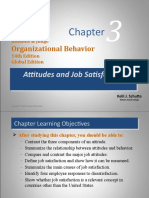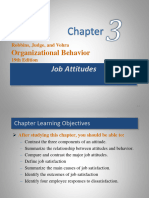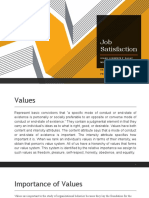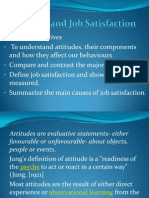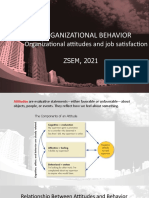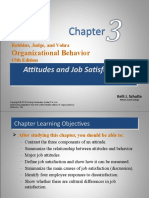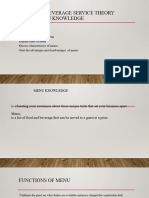0% found this document useful (0 votes)
16 views20 pagesOb CH-3
The document outlines key concepts in Organizational Behavior, focusing on attitudes, job satisfaction, and their impacts on employee performance and organizational effectiveness. It discusses the components of attitudes, methods for measuring job satisfaction, and the consequences of job dissatisfaction, including counterproductive work behaviors. The course aims to equip students with the ability to analyze and improve workplace attitudes and satisfaction levels.
Uploaded by
xiixaea1Copyright
© © All Rights Reserved
We take content rights seriously. If you suspect this is your content, claim it here.
Available Formats
Download as PDF, TXT or read online on Scribd
0% found this document useful (0 votes)
16 views20 pagesOb CH-3
The document outlines key concepts in Organizational Behavior, focusing on attitudes, job satisfaction, and their impacts on employee performance and organizational effectiveness. It discusses the components of attitudes, methods for measuring job satisfaction, and the consequences of job dissatisfaction, including counterproductive work behaviors. The course aims to equip students with the ability to analyze and improve workplace attitudes and satisfaction levels.
Uploaded by
xiixaea1Copyright
© © All Rights Reserved
We take content rights seriously. If you suspect this is your content, claim it here.
Available Formats
Download as PDF, TXT or read online on Scribd
/ 20















